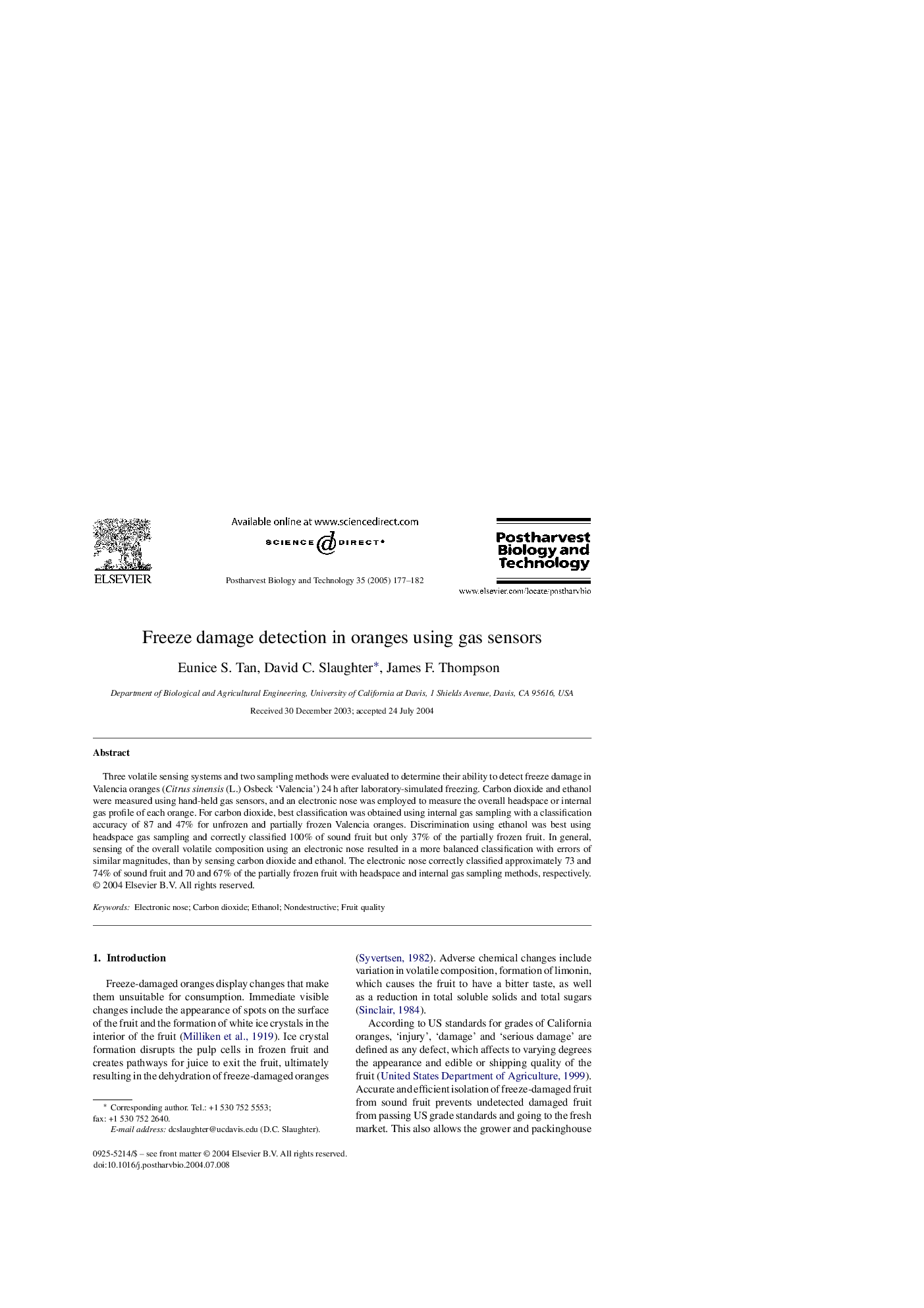| Article ID | Journal | Published Year | Pages | File Type |
|---|---|---|---|---|
| 9475330 | Postharvest Biology and Technology | 2005 | 6 Pages |
Abstract
Three volatile sensing systems and two sampling methods were evaluated to determine their ability to detect freeze damage in Valencia oranges (Citrus sinensis (L.) Osbeck 'Valencia') 24Â h after laboratory-simulated freezing. Carbon dioxide and ethanol were measured using hand-held gas sensors, and an electronic nose was employed to measure the overall headspace or internal gas profile of each orange. For carbon dioxide, best classification was obtained using internal gas sampling with a classification accuracy of 87 and 47% for unfrozen and partially frozen Valencia oranges. Discrimination using ethanol was best using headspace gas sampling and correctly classified 100% of sound fruit but only 37% of the partially frozen fruit. In general, sensing of the overall volatile composition using an electronic nose resulted in a more balanced classification with errors of similar magnitudes, than by sensing carbon dioxide and ethanol. The electronic nose correctly classified approximately 73 and 74% of sound fruit and 70 and 67% of the partially frozen fruit with headspace and internal gas sampling methods, respectively.
Related Topics
Life Sciences
Agricultural and Biological Sciences
Agronomy and Crop Science
Authors
Eunice S. Tan, David C. Slaughter, James F. Thompson,
